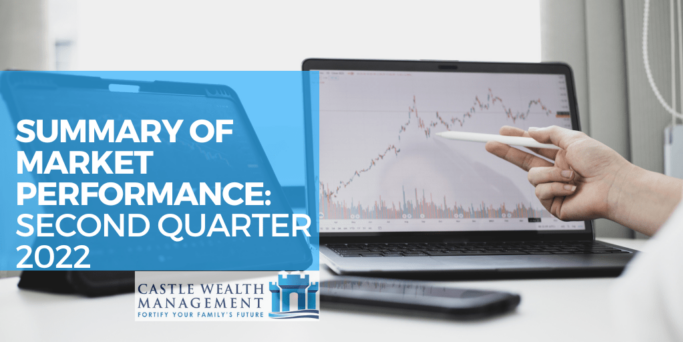U.S. EQUITY INVESTMENT ENVIRONMENT
The second quarter began and ended with significant levels of volatility, with the VIX index closing the second quarter at 28.7. U.S. stocks posted their worst first-half performance since 1970, as inflation concerns, Fed-rate hikes and slowing economic growth weighed on markets. The S&P 500 posted losses of 16.1% in the second quarter and 20.0% in the first six months of the year. The S&P Mid-Cap and S&P Small-Cap 600 performed marginally better but still ended the first half at -19.5% and - 18.9%, respectively. Growth stocks have experienced the largest drawdowns while dividend, value, and low volatility strategies have outperformed. Energy has been the most resilient sector of the S&P 500—off 5.2% in the quarter but up 31.8% year-to-date—the market’s only positive contributor. Consumer discretionary issues were the worst performers for the quarter and the first half of the year with respective losses of -26.2% and -32.8%. Information technology, down 26.9% over the first six months, accounted for -7.86% of the S&P 500’s year-to-date loss with Apple, Microsoft and Nvidia its largest constituents.
INTERNATIONAL EQUITY ENVIRONMENT
International equities also posted significant losses. The MSCI EAFE benchmark of developed market’s -9.3% June return brought the second quarter’s loss to 14.5% and capped off the worst six-month start to a year in the index’s 50+-year history at -19.6%. Japan, one of the benchmark’s largest components, lost 14.6% in the quarter and 20.3% over the first half as the dollar hit its strongest level of the 21st century versus the yen. Ireland, Austria, Sweden and the Netherlands have each declined more than 30% so far this year with France and Germany slightly better at -21.7% and -28.7%, respectively. The rising dollar, which is still the world’s safe haven currency, has caused non-dollar investments to underperform. The pound, yen, and euro ended the quarter near multi-decade lows versus the greenback. Emerging markets outperformed with the MSCI Emerging Markets Index retreating 11.5% for the quarter and 17.6% year-to-date. A near full opening of Shanghai eased supply chains and made Chinese equities one of the bright spots, up 3.5% in the quarter and -11.2% for the first half. Energy-producing countries remained positive year to date with Brazil +2.8% and Chile +8.9%.
FIXED INCOME ENVIRONMENT
May’s one-year inflation print at 8.6% was the highest level seen in more than 40 years. It prompted the Federal Reserve to raise the Fed Funds rate by 50bps followed by the first-ever press leak on June 13th which signaled their intention to raise the policy rate by 75bps two days later, alongside the beginning of quantitative tightening. The resulting broad bond market sell-off drove the 10-year Treasury yield to break through 3.0%, pricing in a roughly 3.4% Fed Funds rate in December. During June, the 30-year Treasury bond yielded more than 3.4% for the first time since November 2018. The Fed’s hawkish stance caused declines across the bond market as prices move in the opposite direction of interest rates. The Bloomberg U.S. Aggregate index was off 4.7% in the second quarter and has given up 10% since the start of the year. Municipal bonds lost the least over the six months at -9.0% . After years in the doghouse, cash has been king in 2022 with its dismal year-to-date return of +0.2%.
COMMODITIES ENVIRONMENT
Second quarter gains were limited to energy which rose 11.9% and accounted for the S&P Goldman Sachs Commodity Index’s 2.0% second-quarter gain and 35.8% year-to-date rise. Gold finished the quarter down 7.5% in response to the dollar index standing near a 20-year peak, making gold more expensive for overseas buyers.

